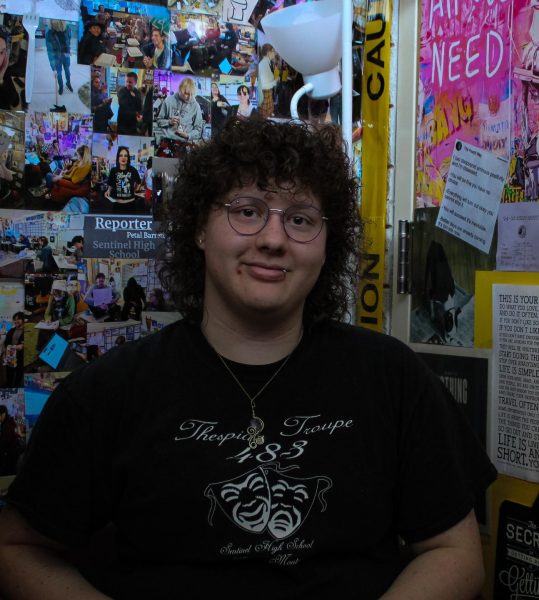Throughout history, women have given their lives to protecting and building up nations around the world. Unfortunately, many have been forgotten by time or covered up in history. The lack of women’s stories has led to what is now known as International Women’s History Month, which is celebrated every year during the month of March.
Women’s History Month was officially recognized by Congress in 1987, but its origin dates back much further.
International Women’s Day, which is March 8th, emerged from the Women’s Labor Movement in the early 1900s in order to bring awareness to the discrimination women faced and to demand equal treatment.
Unfortunately, after about 1911, the day went largely ignored until protests and small community celebrations pushed governments around the world to slowly recognize Women’s Day and eventually Women’s History Month. Without the women who fought for recognition and equal rights, many incredible women would be discounted by history books and forgotten.
There are women around the world with many different backgrounds who have made groundbreaking contributions to science, math, and individual rights; however, the majority of Americans could not name a single woman who contributed to science or math off the top of their heads.
Susan B Anthony:
While Susan B. Anthony is a widely recognized name, few people remember her contributions and hard work as anything more than a brief video in a class they probably ignored. Anthony played a large role in not only the Women’s Suffrage Movement, but also the Abolition Movement.
She served in an anti-slavery society and founded the American Equal Rights Association in 1868. Anthony dedicated her entire life to her cause and was criticized by many for not conforming to expectations.
Grace Hopper:
Grace Hopper was one of the first three modern programmers in the world. She had a Ph.D. in mathematics from Yale University and helped develop new computer technologies. When World War II broke out, she worked at Harvard doing calculations for weapons and aircrafts that were essential to the war effort.
She then helped to develop the Mark 2 and Mark 3 computers but eventually left Harvard after realizing that they would not grant a woman tenure. Her work and the work of so many other women during the war allowed the U.S. to manufacture supplies and weapons needed in order to win the war, a commonly overlooked fact.
Isabella Bird:
Isabella Bird was an intrepid adventurer and author and the first woman to be elected as a fellow of the Royal Geographical Society. She traveled around the world and eventually decided to explore Colorado. In 1873, she traveled over 800 miles around Colorado, living in nature and discovering and writing about the world around her.
During a time when women were expected to stay home and take care of a house, Bird was a natural western cowboy riding through the Rockies and discovering the little known wilderness.
Rosalind Franklin:
Rosalind Franklin was a chemist in London who studied the structure of DNA. She discovered a number of important things about DNA, including its density and chemical composition, but the most important was solidifying the idea of its helical structure.
She was incredibly smart and made advances in crystallography (a technology used to get images of microstructure) in order to better see DNA and RNA. Her findings were shown to James Watson and Francis Crick who thought that she could not understand them and who ultimately got credit for the discovery of DNA’s structure, leaving Franklin another forgotten figure.
Chien-Shiung Wu:
Chein-Shiung Wu was a nuclear physicist in the early 1900s. She changed the world of physics by disproving the law of conservation of parity and working with subatomic particles. Two of her colleagues asked her to design an experiment to prove their theory of mirror images during Beta decay and she did so, however, when they won the Nobel prize, she was not included.
During World War II, Wu aided the Manhattan project as a key member and designer. She continued her work for many years, becoming a well respected physicist. At a woman’s science symposium she famously said, “I wonder whether the tiny atoms and nuclei, or the mathematical symbols, or the DNA molecules have any preference for either masculine or feminine treatment” in support of women in science.
Malala Yousavzai:
Malala Yousavzai is a more recent figure to make history. She fights for women’s education in Pakistan and won a Nobel prize at only 17 years old. At the age of 15, she was shot in the head by the Taliban, survived, and continues to fight for what she believes in.
Yousafzai is an inspiration to young women around the world as she stands for peace, perseverance, and strength, proving that women can overcome their circumstances and do great things.
Women such as these have laid the foundation for a strong and equal society, but the fight is not over. While conditions for women have drastically improved over the last few centuries, they still face issues such as the gender pay gap and lack of access to reproductive rights, healthcare, and education.
Luckily, women have not backed down from the challenge and continue to speak out and break expectations in order to gain equality.
During the month of March, there were protests around the world in which women took to the streets demanding equal pay and an end to the violence against them.
There have also been recent restrictions on abortion and reproductive care in the United States. Because of this, women have held mass protests in the capitol as well as states around the nation, including Texas and Connecticut in order to show legislators and the president that they “will not go back” to a society that disrespects and ignores women, a commonly used slogan.
For hundreds of years, women have worked tirelessly to make new discoveries and make better communities around the world while constantly being scrutinized and demeaned. These women continued to fight for their rights and ideas, and now, the women of today have picked up the fight to continue the work of the women who came before them.





